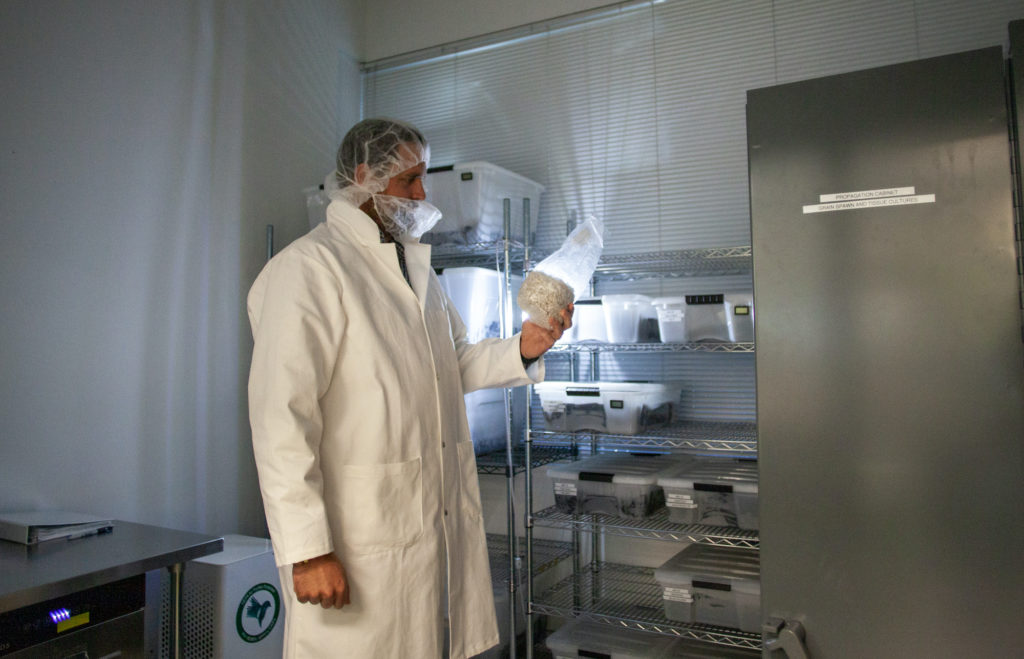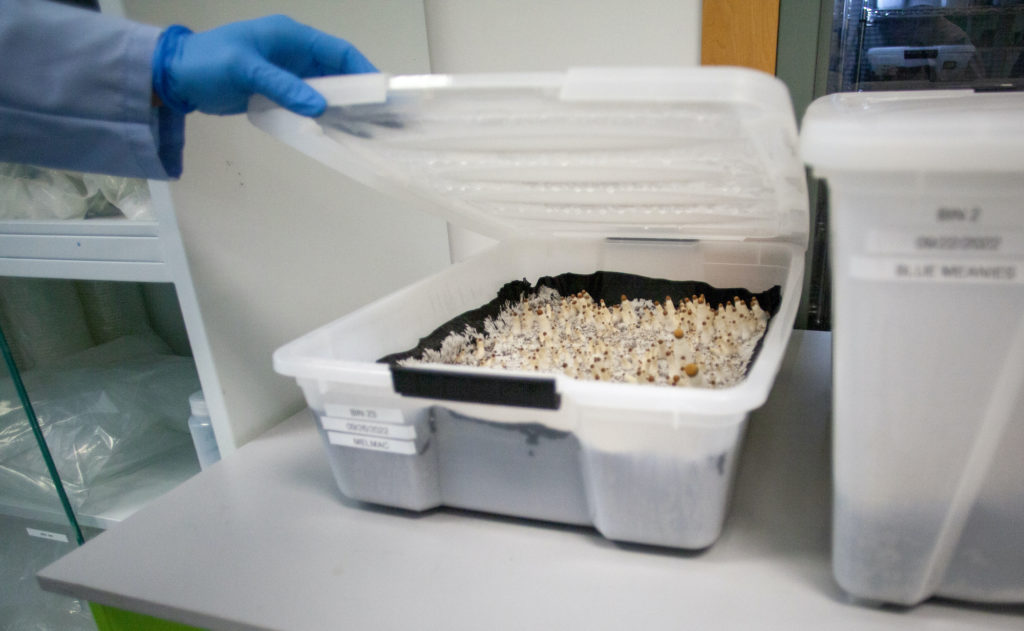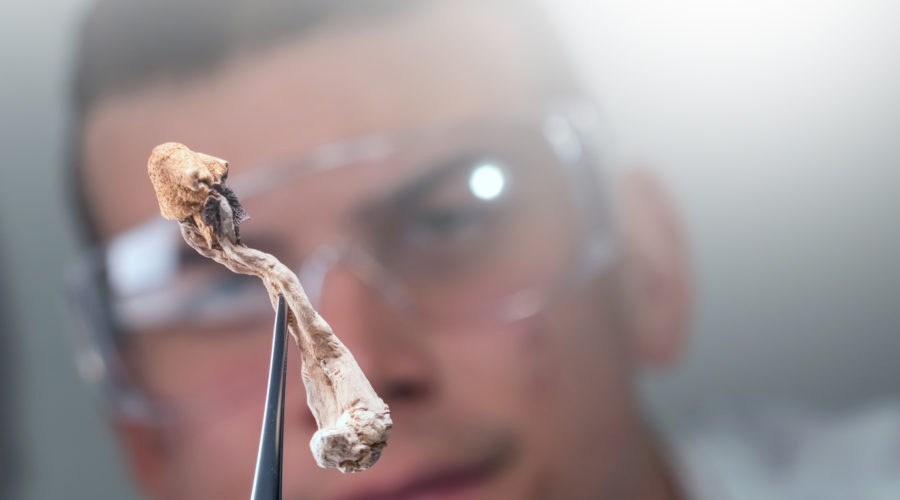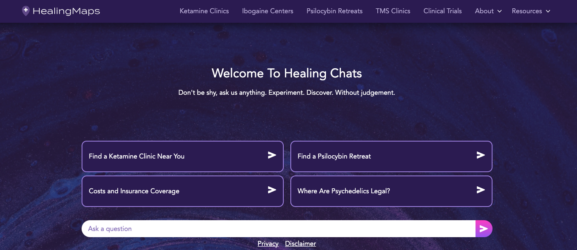“Nobody Wants A Synthetic-Only Future”: Filament Health Is Formulating Natural Psilocybin And Standardizing Ayahuasca
Up until recently, all clinical studies involving psilocybin relied on a synthetic iteration of the drug for standardization purposes. When the second wave of psychedelic research began picking up in the late 2010s, Filament Health CEO Ben Lightburn and his colleagues asked themselves why no one had thought to create a natural version of the drug.
“We looked at what people were already consuming, and 99.99 percent of all psilocybin that’s been consumed has been natural. And yet, all the research, all the clinical studies, everything was done with synthetic psilocybin,” said Lightburn in an interview with Healing Maps at the company’s Burnaby, B.C. office.
“And that’s because making natural psilocybin is hard.”
Lightburn, who is also the co-founder of Filament Health, has a long history in the natural extracts industry. He and several Filament team members sold their extraction start-up, Mazza Innovation, in 2018. The company produced multiple tons of extracts per day — identifying an opportunity in psychedelics and the growing mental health crisis.
“There’s not a lot of people out there who have been plugging away for their whole careers making botanical extracts,” he said. “We wanted to take all of those skills, all of that experience, and apply it to an industry where we could potentially have an opportunity to do a lot of good.”
RELATED: The Top 10 Psychedelic Science Studies Of 2022

Filament Health’s Mission To Supply Natural Psychedelics
Today, Filament ships naturally derived psychedelics to clinical trials around the world. This includes the likes of North America, the United Kingdom, and Europe.
In 2021, the company received FDA approval for the first-ever clinical trial using naturally sourced psychedelics. Additionally, the University of California San Francisco is conducting a phase 1 trial on Filament’s IP-protected oral and sublingual psilocin and oral psilocybin.
At Filament Health, the focus is on developing naturally derived medicines and not on the indications for those medicines. So the company’s primary role in the emerging psychedelic space is as a supplier for both academic and commercial researchers looking into their medical potential. Though small, the company’s lab has the capacity to manufacture up to 10,000 doses of psilocybin per month. This is more than enough to meet the current demand for clinical trials.
*Outside of supplying trials, the company is one of the current suppliers of psilocybin for Canada’s federal Special Access Program. This program provides patients in Canada legal access to psilocybin. Lightburn says it feels good to know that “there are actual patients consuming our products in the real world.”
*Note: A previous version of this story incorrectly noted that Filament was the only supplier of psilocybin to Health Canada’s Special Access Program.
“The Special Access Program is only for experimental medicines that haven’t been approved, but many of the applications with our drug are being approved by Health Canada,” he says. “To be already working with doctors and patients? It’s happened a lot more quickly than we thought was possible.”
RELATED: Mio’s Story: How Psilocybin Therapy For End-Of-Life Anxiety Helps To Treat The Whole Person

Encapsulated Psilocybin
So, what does a legal dose of psilocybin look like from a Filament Health lab? Lightburn was able to show me: A 25-milligram capsule of psilocybin looks just like any other dietary supplement or pharmaceutical product that one might consume.
But it doesn’t just contain psilocybin: “It also contains the secondary metabolites in the same ratio and proportion as if you were to consume the magic mushroom naturally, including psilocin, baeocystin, norbaeocystin, and norpsilocin,” he says.
“This makes our manufacturing work more challenging because we essentially have to standardize a dozen or more different compounds. But we believe over time, we can show that the presence of these other compounds can work together to have some kind of benefit relative to pure synthetic psilocybin, or even isolated natural psilocybin.”
From a medical perspective, there are many reasons why encapsulating naturally derived psilocybin makes sense. The amount of psilocybin in any given mushroom can vary from stem to cap, making it hard to judge dose, even by weight. Filament Health’s capsules remove the variability, and they also decrease the form factor — from five grams of dried magic mushrooms to one tiny capsule.
RELATED: Modernized vs. Traditional Ayahuasca Ceremonies: Which is Right For You?
Filament Health Hopes To Standardize Ayahuasca
Psilocybin is getting a lot of attention in the current research landscape. However, Ben Lightburn and his Filament Health team want to ensure that other natural psychedelic medicines receive similar acceptance.
“There’s no rule that psilocybin is the best psychedelic, even the best psychedelic in the magic mushroom,” he says. “We’re working on different natural psychedelics, and one of those is ayahuasca.”
Consumption of ayahuasca traditionally combines a mixture of two different plant extracts — Banisteriopsis caapi, the ayahuasca vine, and the Psychotria viridis, the chacruna shrub. The latter is rich in the classic psychedelic DMT. The former is rich in beta-carboline alkaloids like harmine and harmaline.
For a psychedelic experience to occur, a person must ingest them.
DMT has incredibly low oral bioavailability, with enzymes in the gut breaking it down before it crosses the blood-brain barrier. When consuming the plant extracts in tandem, the alkaloids in the ayahuasca vine block the enzymes in the gut. This allows the DMT from the leaves of the chacruna shrub to digest fully.
“It’s fascinating that Indigenous peoples in the Amazon figured out that if you have this other extract along with the DMT-containing extract, it prevents the breakdown of the DMT. That’s what allows ayahuasca to have an effect,” says Lightburn.
Working with samples of both species, the leaves of each plant turn into a powder, thus beginning the extraction process.
Filament has produced several sample batches of their iteration of ayahuasca so far. It is also working to develop a standardized dose, so ayahuasca can be studied in a formal research setting, too.
“We’re not trying to replace or even replicate the ceremony or tradition,” he says. “What we are trying to do is take the product and give it some standardization. Because with any product, if you don’t make the same thing over and over, then you can’t get insights from clinical trials.”



